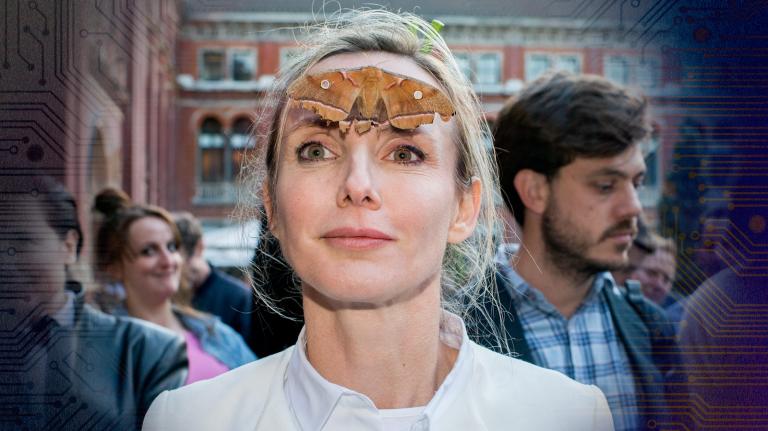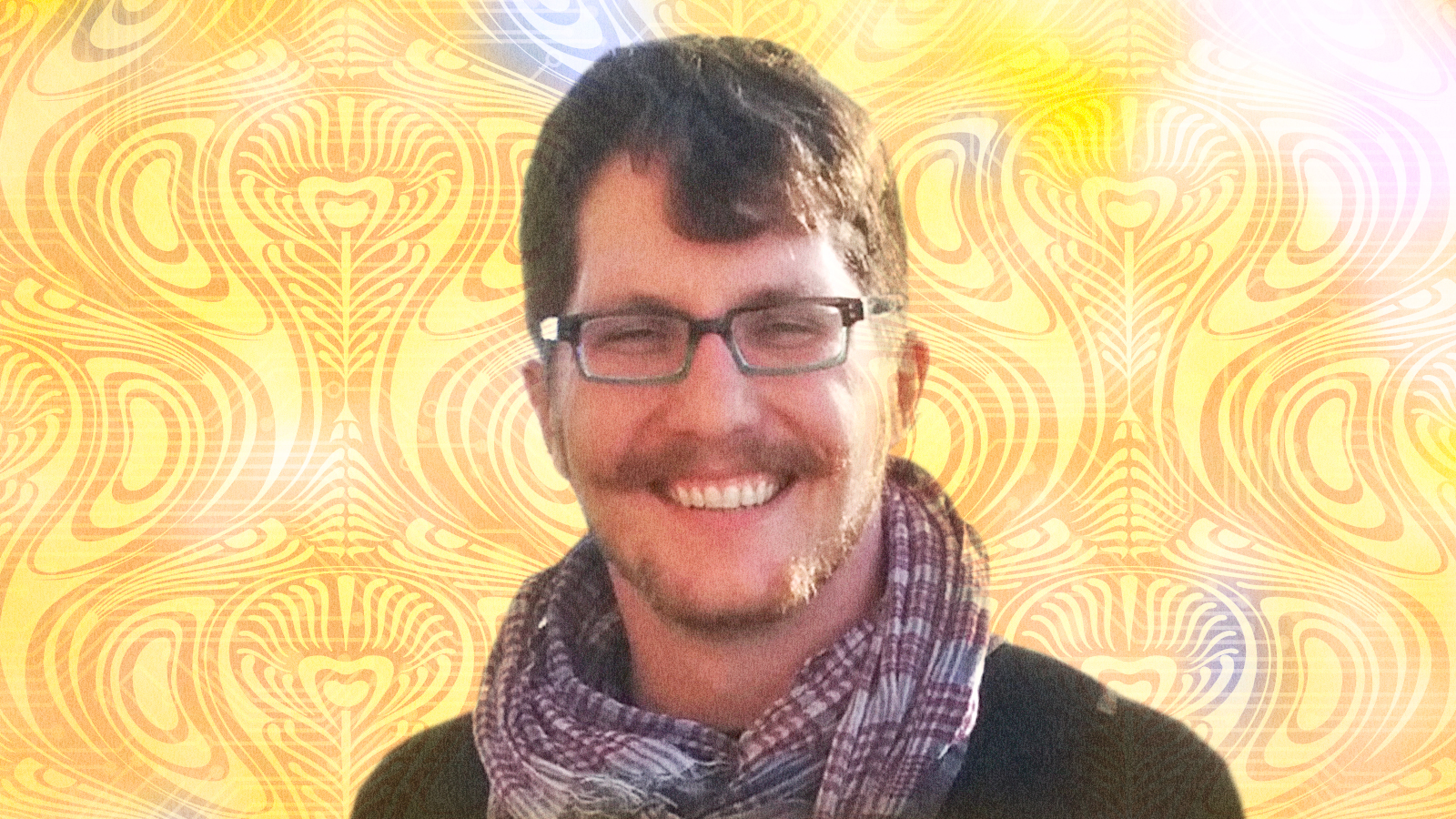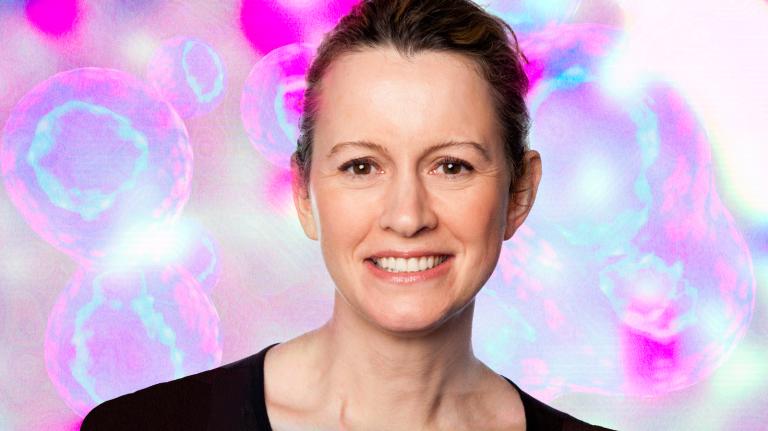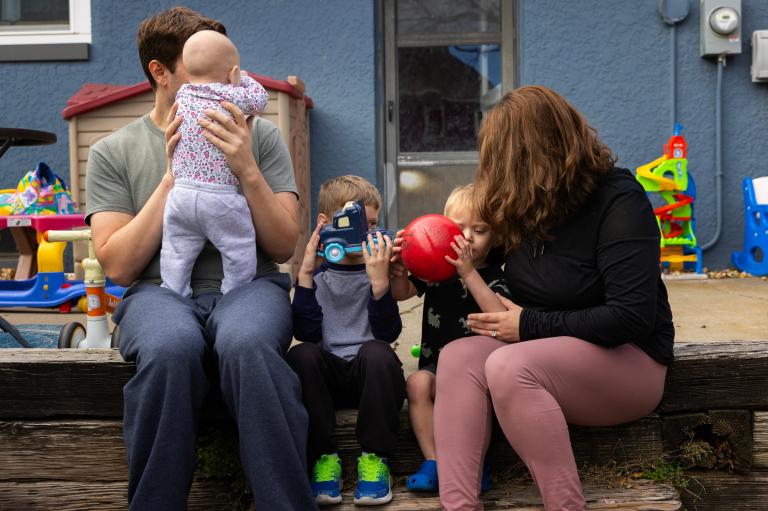In the realm of sci-fi subgenres, there’s a little something for everyone. For the nihilists who envision a techno-dystopian future, there’s “cyberpunk.” For the romantics who like to fantasize about an alternate past, there’s “steampunk.” And now, for the hopefuls who want to change the here and now, there’s solarpunk — or at least, there will be if Adam Flynn gets his way.
A twentysomething California transplant, Flynn goes by the name Threadbare on Twitter. His profile says “trying to make Solarpunk a thing,” right before “Bay Area’s #1 Mermaid Hauler.” In reality, he’s a strategist at an ad agency, a sci-fi enthusiast, and someone who thinks a lot about what the hell we’re gonna do about climate change.
Last year, Flynn published “Solarpunk: Notes toward a manifesto,” as part of Arizona State University’s Hieroglyph Project — a forum for science fiction that spurs innovation and optimism. In it, Flynn introduces this nascent, online movement as something that young people can latch onto with cautious optimism:
It’s hard out here for futurists under 30.
As we percolated through our respective nations’ education systems, we were exposed to WorldChanging and TED talks, to artfully-designed green consumerism and sustainable development NGOs. Yet we also grew up with doomsday predictions slated to hit before our expected retirement ages, with the slow but inexorable militarization of metropolitan police departments, with the failure of the existing political order to deal with the existential-but-not-yet-urgent threat of climate change. Many of us feel it’s unethical to bring children into a world like ours. We have grown up under a shadow, and if we sometimes resemble fungus it should be taken as a credit to our adaptability.
We’re solarpunks because the only other options are denial or despair.
In short, solarpunk is a reaction to climate change, inequality, and our cultural obsession with dystopian futures. Its followers, mostly on Tumblr and numbering in the thousands, Flynn estimates, want a world where people thrive through energy independence, local resilience, and sound infrastructure.
[grist-related-series]
The vision is not about back-to-the-earth survivalism, Flynn says, because solarpunks embrace the responsible use of new technologies like synthetic biology and sensor networks. And it’s not utopian, he says, because the solarpunk future is one that is both high-tech and gritty, and — more importantly — one that we can actually achieve. “It’s post-apocalyptic, but it’s actually kind of nice — like, maybe (the future’s) not that bad. Maybe they just give it a bad rap by calling it an apocalypse.”
Flynn grew up partly in the Pennsylvania Rust Belt and partly in Yuma, Ariz. — the driest, sunniest corner of the state. It was an upbringing, Flynn says, that made him hyper aware of both the crumbling built world and the unbending realities of the natural one. His family had a copy of Cadillac Desert: The American West and its Disappearing Water on the shelf from the time he was about 14.
As an undergraduate at Princeton, Flynn studied intellectual and cultural history and the history of technology. He wrote a thesis on the 1938 “The War of the Worlds” radio broadcast. After college, he spent two years teaching in Cambodia, where he saw firsthand the effects of poor infrastructure, government centralization, and corruption — people selling gasoline out of old bottles of Black Label, farmers running their electronics off of car batteries, his students losing their minds over new roads.
In 2012, Flynn was back in the U.S. and kicking around ideas for his friend’s next young adult novel, when he thought up the term “solarpunk.” A quick Google search revealed that a few other people had already independently coined the term. “It makes sense,” he told me. “The name sort of writes itself. Once you have steampunk, solarpunk becomes almost inevitable. I had a bone to pick with steampunk for a very long time — and that’s: where does the coal come from?”
Today, Flynn is a prominent voice in the solarpunk community, but he says that he doesn’t feel like he owns the movement:
“I’ve sort of been trying to steward it along and be like ’OK, go. Go forward. No, no, not over there! Alright let’s talk about infrastructure a little bit. Let’s reawaken the political imagination. Let’s do that a little bit more.”
I spoke with Flynn over Skype late one afternoon this summer. He was sitting on the rooftop of his office building and riffed for nearly two hours about solarpunk — what it is, where it came from, and where it’s going. Here are some highlights from our conversation, edited for clarity.
On the solarpunk aesthetic, and hipster culture:
It’s circa summer 2014, and somebody on Tumblr under the handle Miss Olivia Louise puts together this post about the idea of a visual aesthetic of solarpunk. It’s basically this idea of an art nouveau aesthetic, about infrastructure made beautiful, a certain reflection of this desire for return to handicrafts — and, you know, lots of bicycles.
[It’s] sort of like [what] you would see in a Miyazaki movie, where there’s all this technology. Ultimately, it’s about returning into balance with your environment.
There are certain things that are already considered within the hipster orbit that could transition well into solarpunk. Like fermentation — what cool future things could come out of that? This whole world of getting bacteria to do work is something I’m really curious about. It’d be super rad to have fungus that could break down plastic and turn it into something useful. That would be a future I’d be into.
On making things that will be around for a while:
We need to think about a design paradigm that’s a little bit calmer, a little bit more built-to-last and modular, able to be adapted to events in the future that we can’t foresee. Things like Rails-to-Trails I really love because it’s the clever adaptation of existing infrastructure toward things that benefit us in the here and now, so that we don’t have these giant mega-projects gathering dust somewhere because the assumptions that undergirded it are no longer tenable.
Eventually, it would be really nice if we had one of those modular smartphone things, where you just replace things bit by bit. I’m generally on the side of the people who think you should be able to open and repair your technology. As beautiful as the experience of Apple’s walled garden has been, it’s encouraged a sense of opacity and passivity towards our technology that I think is regrettable.
Also, things that can retrofit the suburbs would be really nice. How do you take what we have already and change it, bit by bit, into the future that we want, rather than dreaming up these ideas where we wipe the slate clean and build something new?
On how efficiency can get in the way of resilience:
I have been friends and acquaintances for a long time with [hacker and security specialist] Ella Saitta — she’s @Dymaxion on Twitter. She came out of a background of security engineering to think about big systems and how they break — more specifically, how to get them to break more gracefully. As a system gets bigger and faster and more efficient, it also becomes more brittle, generally speaking, because it tends to take away pockets of local redundancy. But in situations of being cut off from the broader system or the broader grid, it’s actually really helpful to have those things.
On the emerging struggle for decentralization and independence in local communities (so solarpunk!):
If you’re looking in the right places, you can see the shape of things to come. The pattern I started pulling out was this push and pull between decentralization and big centralized power when it came to electricity generation and infrastructure.
The fight in Spain over solar is super fascinating, because you have opponents claiming that they’re trying to tax the sun, and there are these big penalties for removing your house from the grid. You see it in Detroit and water and just the way Detroit was kind of encircled and forced into this emergency management situation.
On Elon Musk:
Elon Musk is doing really cool things from a certain perspective. I’m really curious as to what happens when that giant facility out in Nevada gets cranking out batteries, and you have this possibility of rooftop solar and an electric vehicle and a battery in your home that can act as a backup and can store daylight power for later use and charge vehicles.
That’s all well and great, but the idea that it should be presented to us by a Tony Stark-style billionaire is maybe not my jam. If the last eight to 10 years taught us anything, it’s that we shouldn’t be reliant on lone saviors and that really big things happen when we all pull together.
I am pro Elon Musk existing in the world. I am pro him doing his thing and driving things forward and getting things onto the agenda for people who might otherwise not pay attention to a bunch of nerds. I want 13-year-olds to be like ‘Yeah, OK — Elon Musk is cool, but also, let’s form a credit union that invests in local solar and environmental restoration.’
On what you can do to be solarpunk now:
I’m not telling people to be doomsday preppers. There’s this whole weird fantasy of zombie apocalypse as a hidden undercurrent for people’s desire to shoot the poor, and I’m not about that.
But it’s much more about actually getting people to reengage with their communities — actually looking at not the individual household but the block or the town as the unit of focus and getting people ready for whatever may come but also more connected and stronger as a community.
I think the most here and now solarpunk thing you can do can also be classified as a form of emergency preparedness or community organizing.




